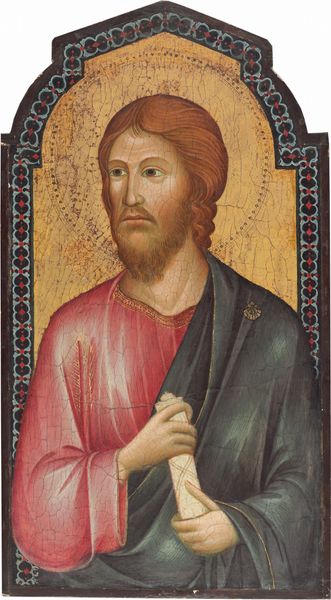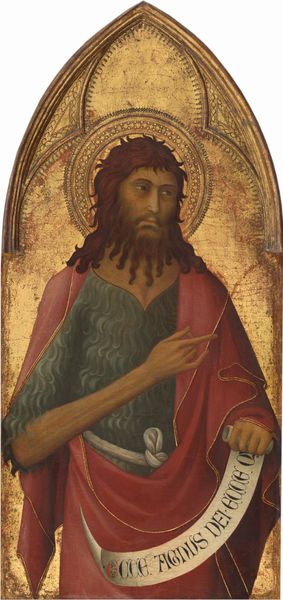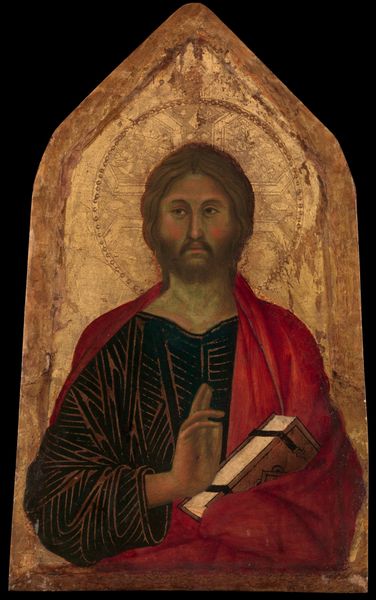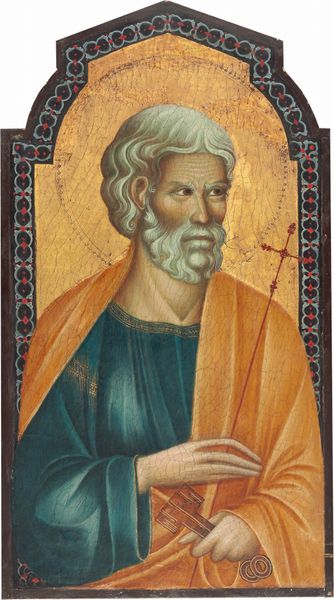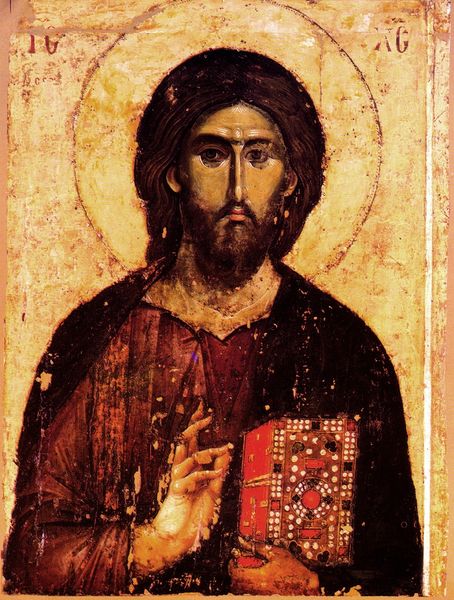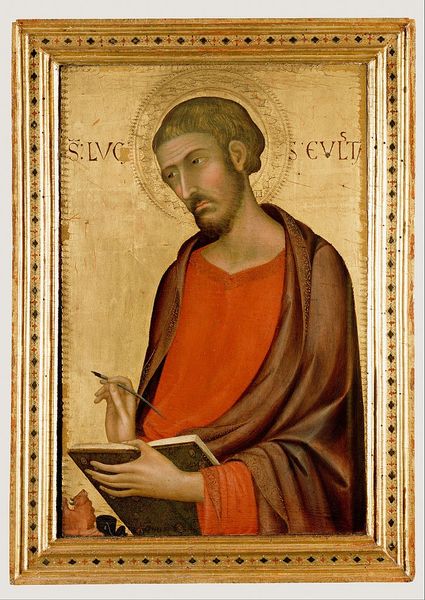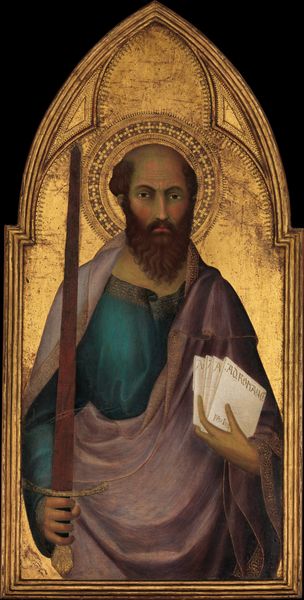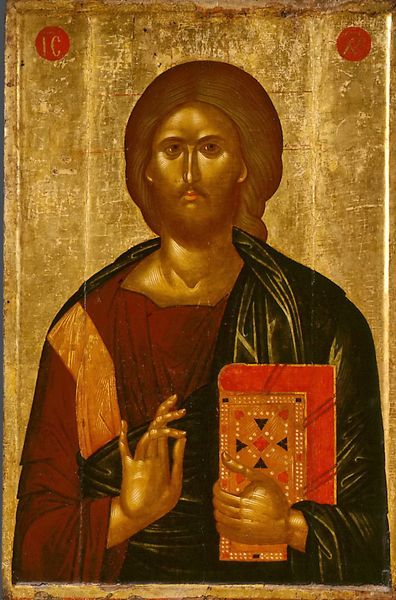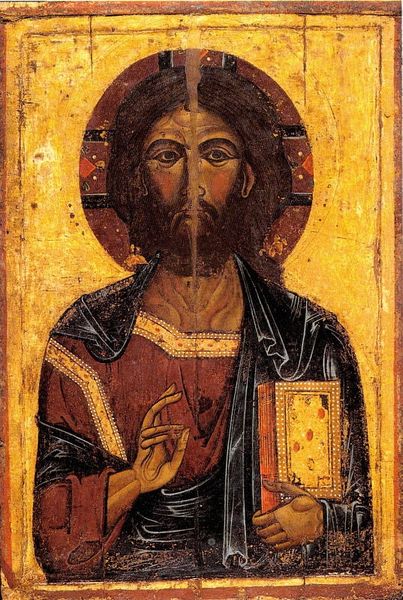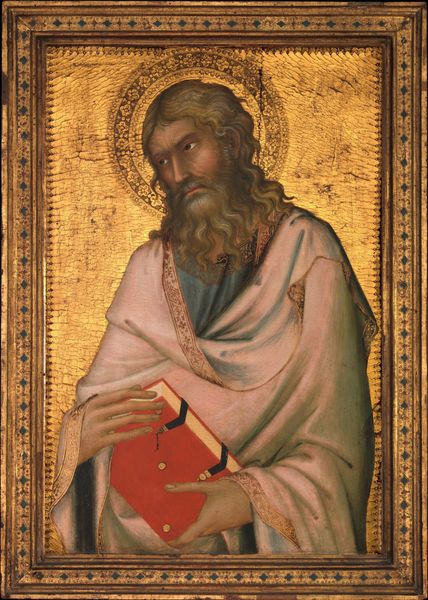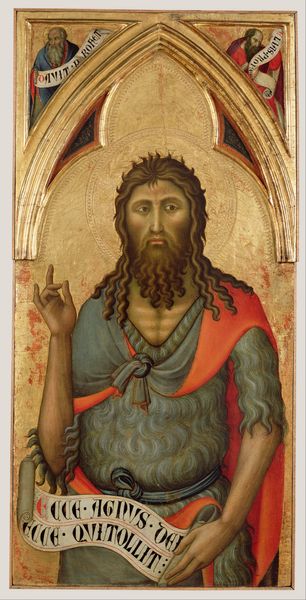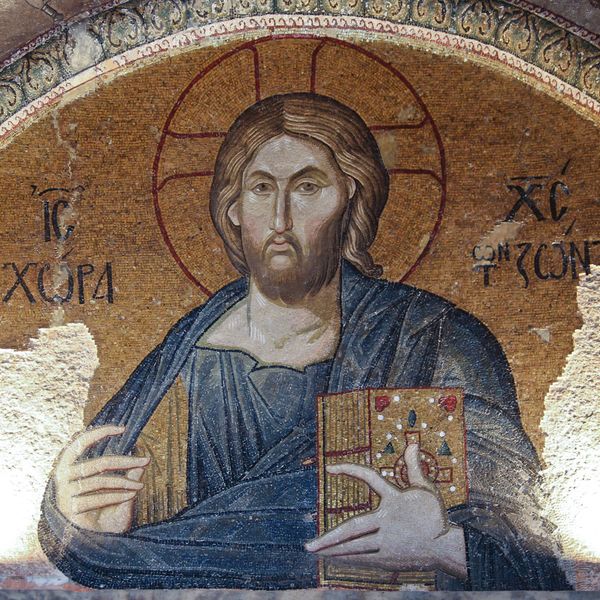
panel, tempera, painting
#
portrait
#
panel
#
tempera
#
painting
#
figuration
#
history-painting
#
italian-renaissance
Dimensions: painted surface (top of gilding): 73 × 52.6 cm (28 3/4 × 20 11/16 in.) painted surface (including painted border): 75.6 × 52.6 cm (29 3/4 × 20 11/16 in.) overall: 78.2 × 55.5 × 1.5 cm (30 13/16 × 21 7/8 × 9/16 in.)
Copyright: National Gallery of Art: CC0 1.0
Curator: This tempera on panel, circa 1310, presents a portrait of "Christ Blessing" rendered by Grifo di Tancredi. What are your initial thoughts as you take it in? Editor: My first impression is of a quiet solemnity. The color palette is muted—soft pinks and blues—which gives it a feeling of gentle contemplation. His halo feels aged but luminous against the backdrop. It’s reverential, but also intimate in scale. Curator: Indeed. Considering the socio-political landscape of the early 14th century, this intimacy could represent a deliberate shift away from the monumental depictions that characterized earlier Byzantine art, perhaps reflecting a more personal engagement with spirituality accessible to everyone and not just elite church members. What about the hand gesture and the book he's holding, any thoughts about the meaning embedded in them? Editor: The blessing hand—two fingers raised—carries centuries of established meaning: the duality of Christ’s divine and human nature. Then there’s the book, open to display writing, which most likely represents the Gospels. In combination, these become potent symbols for faith. I am curious, do you think the artist tried to address the issue of illiteracy, where the visual symbols speak more clearly to many people than words might have? Curator: It's compelling to think about it that way. Considering most could not read at this time, these symbols definitely provided direct visual cues toward piety and understanding scripture in broader social-economic contexts marked by extreme disparities and high rates of illiteracy. In addition to social context, do you believe gender and identity impacted the message of the work? Editor: The almost feminine features are notable given the context of power that’s often projected in art of this era. He’s holding power rather than wielding it, I guess? Curator: Precisely. Its deliberate challenge to accepted ideas surrounding power at the time invites the viewers to really examine gender roles of religious authority during that era. Editor: Yes. This reminds me how potent the cultural symbolism of a piece like this would have been. Seeing this image in its original location probably invoked an emotional connection across language and literacy barriers. Curator: Right, it opens dialogue with our own perceptions too. Thanks for sharing. Editor: Thank you for your insightful observations. It has definitely made me appreciate how culturally charged art can be in a specific time.
Comments
No comments
Be the first to comment and join the conversation on the ultimate creative platform.
